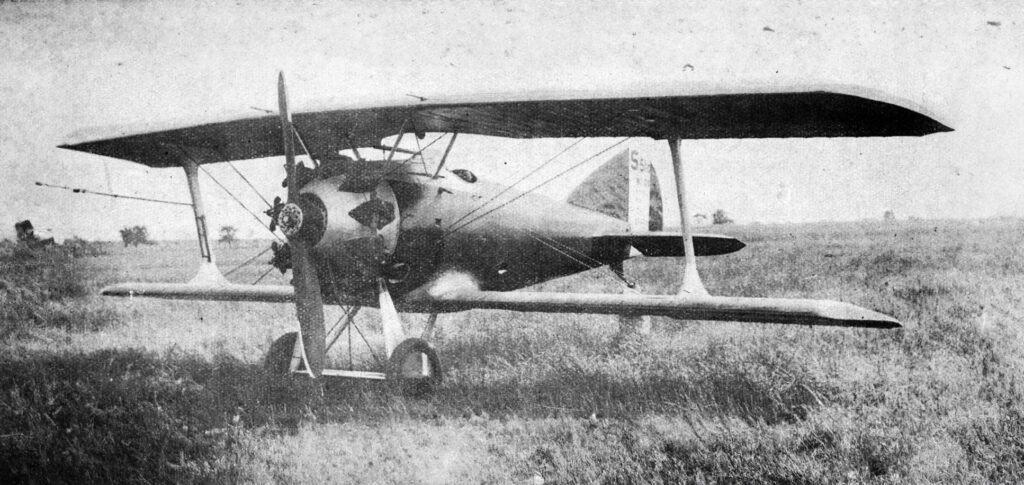Blériot-SPAD S.51: French 1920s advanced trainer biplane, known for agility and dual-control system for pilot training. The Blériot-SPAD S.51 was a significant training aircraft of the interwar period, serving primarily to prepare French pilots for future combat roles. As a stepping stone for airmen between basic trainers and frontline fighters, the S.51 offered a balance of performance and handling characteristics conducive to advanced flight training.
The interwar years were a period of reorganization and modernization for many of the world’s air forces. In France, this era prompted the development of aircraft that could serve as a bridge between initial pilot training and the operation of frontline fighters. The Blériot-SPAD S.51 emerged as a solution to this requirement, providing an advanced training platform that would help pilots transition smoothly to more complex and faster aircraft.
History of the Development of the Blériot-SPAD S.51
Developed by Blériot Aéronautique, the Blériot-SPAD S.51 continued the lineage of SPAD aircraft renowned for their roles during World War I. Post-war aviation development in France sought not only innovation in combat aircraft but also the means to effectively prepare pilots for these advanced machines. The S.51 was born out of this necessity for an intermediate trainer that could handle more like a fighter aircraft, challenging pilots to refine their skills.
The program was initiated by Blériot Aéronautique, a company that had been at the forefront of aviation technology since Louis Blériot’s historic cross-Channel flight in 1909. The S.51 was a response to a specification for an advanced trainer issued by the French Air Ministry, a project that would benefit from the company’s extensive experience in aircraft design. The aircraft first flew in the early 1920s, although a specific date is not well documented.
The timing of the S.51’s development coincided with a period of significant transition in military aviation. The lessons of World War I had demonstrated the importance of well-trained pilots, and nations were investing in the development of training programs and equipment. The S.51 was part of this wave of new trainers designed to provide pilots with the skills necessary to handle the next generation of military aircraft.
Design of the Blériot-SPAD S.51
The Blériot-SPAD S.51 maintained the biplane configuration that was common in the era, a design choice that provided favorable lift characteristics and stability. It featured a wooden frame with fabric covering, a standard construction technique of the time that offered a good balance between strength and weight.
The aircraft measured approximately 23 feet in length (7 meters) with a wingspan of 31 feet (9.45 meters). The upper and lower wings were staggered to improve pilot visibility and were equipped with ailerons on both sets for enhanced maneuverability. One distinctive feature of the S.51 was its dual-control system, allowing both the instructor and the student pilot to take control of the aircraft, an essential characteristic of an advanced trainer.
The S.51’s design included a fixed tailskid landing gear which was robust and suitable for the grass airfields typical of the period. Its open cockpit exposed pilots to the elements, which, while standard for the time, required them to be well-equipped against the weather and wind.
Advantages of the S.51 included its agility and the responsiveness of its controls, which closely mirrored the characteristics of contemporary operational fighters. This allowed pilots to experience handling akin to combat conditions. Drawbacks of the design were inherent in its biplane structure and the limitations of its engine technology, which made it less capable than frontline aircraft in terms of speed and altitude performance.

Performance of the Blériot-SPAD S.51
The S.51 was powered by a Hispano-Suiza 8Ab engine, an 8-cylinder V-type engine that delivered approximately 180 horsepower (134 kW). This powerplant enabled the S.51 to achieve a maximum speed of around 124 mph (200 km/h) and a service ceiling close to 19,685 feet (6,000 meters). Its operational range was approximately 248 miles (400 kilometers).
When compared with other advanced trainers of the time, such as the British Avro 504 or the American Boeing-Stearman Model 75, the S.51 offered similar performance. It was not intended to match the speed or firepower of frontline fighters but to prepare pilots for transitioning to such aircraft.
Military Use and Combat of the Blériot-SPAD S.51
The S.51 served primarily within French military aviation circles as an advanced trainer. Its armament, typically for training purposes, could include a single machine gun for gunnery practice, although it was not a combat aircraft and did not see combat service.
The value of the S.51 lay in its role in pilot development, preparing airmen for future assignments in combat types. It was an integral part of the training regimen that would see French pilots transition to aircraft such as the Dewoitine D.500 series fighters. The S.51 did not compete directly with frontline aircraft but instead complemented them by ensuring pilots were adequately skilled before advancing to such platforms.
The aircraft did not see extensive export outside of France, and as with many interwar designs, it was eventually outpaced by technological advancements. It was phased out in favor of more modern trainers, reflective of the progress in aircraft design leading up to World War II.
The Blériot-SPAD S.51 holds its place in history as a pivotal training aircraft of the interwar period. It bridged the gap between basic training biplanes and the more advanced monoplane fighters that would dominate the skies in World War II. Its development and service reflect the evolving needs and doctrines of military aviation in a time of significant technological progress. Although the S.51 itself did not partake in combat, it was instrumental in crafting the skills of pilots who would.
Back to the Warbirds section.